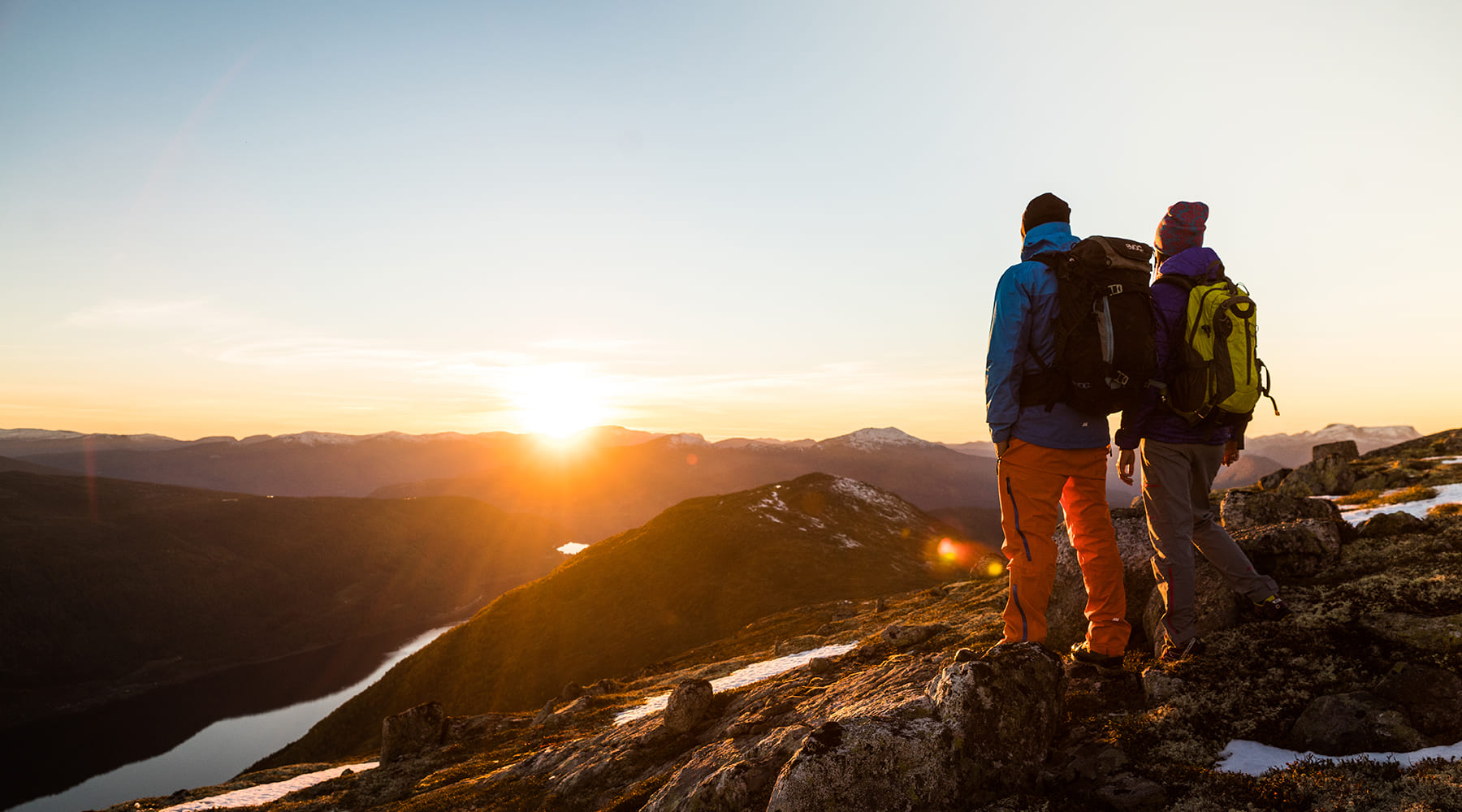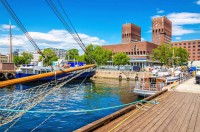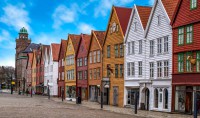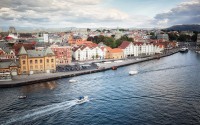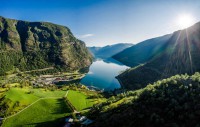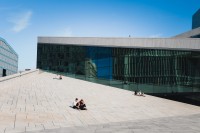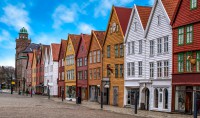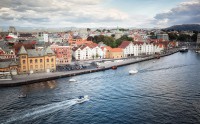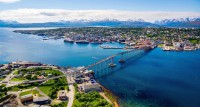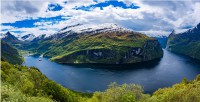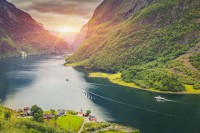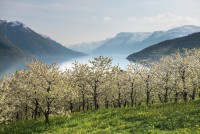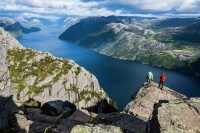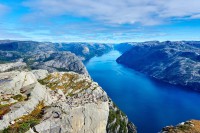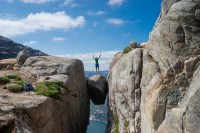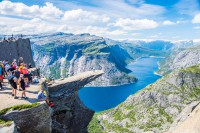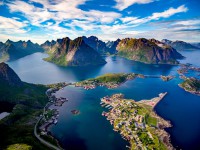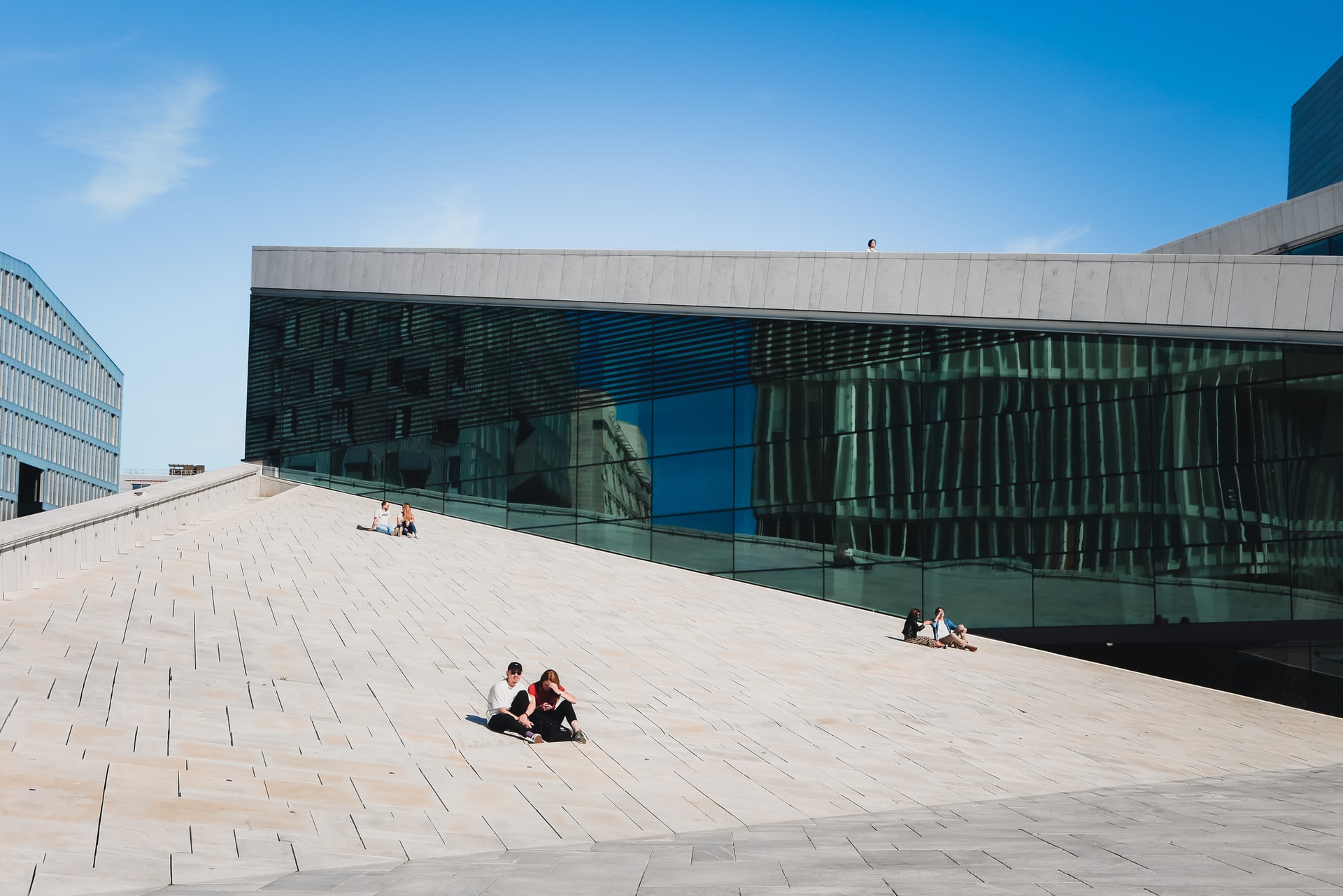
Cities
Oslo
Oslo
Population: 693 491 habitantes Region: √ėstlandet Actual temperature:Norway's capital is a vibrant, modern city that in recent years has created some of the world's most avant-garde buildings. The Opera House, the Bj√łrvika Library, the Astrup Fearnle Museum of Contemporary Art and the new Munch Museum make Oslo an international benchmark for new architecture. However, the city is not only looking to the future, it also has an interesting historical heritage and a first-class museum complex. The Viking Ship Museum, the Kon-Tiki Museum and the Norwegian Folk Museum allow visitors to travel back in time and learn about some of the most important episodes in Norwegian history.
Oslo's history dates back to the 11th century, when it was founded in 1048 by King Harald III. In 1314 it became the capital of Norway after the capital was transferred from Bergen to Oslo. Over the centuries the city suffered numerous fires, sieges and pandemics that diminished its importance to the detriment of Bergen. From the 18th century onwards, a period of prosperity began due to the growth of commercial activity. In 1836, Oslo overtook Bergen as Norway's largest city. Throughout the 19th century some of the city's most iconic buildings were built, including the Royal Palace, the Storting building (Parliament), the National Theatre and the University. In 1924, the city changed its name from Christiania to Oslo. During World War II the city was occupied by German invaders until their expulsion in 1945. After the war, Oslo began a period of expansion and population growth that continues to this day.
Oslo also has many green spaces where residents come to rest, relax or simply do sports. Vigeland Park is the most famous park in the city. Every year thousands of tourists flock to see the more than 200 lifelike human figures in the park.
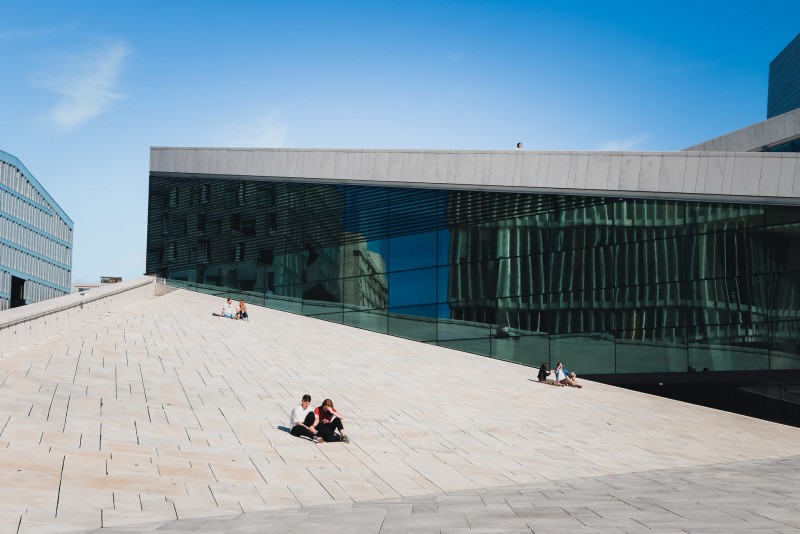
Looking to the future
The city's most avant-garde neighbourhood is Barcode, a redevelopment project of the old wharf. It consists of a row of high-rise buildings spaced apart to allow light and air to pass through and ensure views of the fjord. The buildings that make up the complex have received a multitude of international awards and accolades.
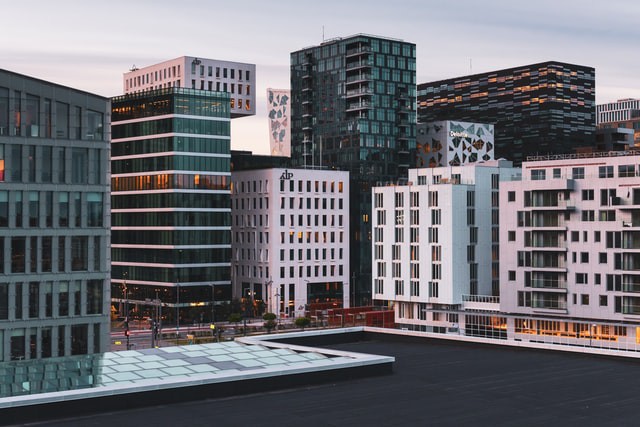
In recent decades the city has unveiled buildings with unique avant-garde architecture. The Oslo Opera House has become an icon of the city. The Bj√łrvika library, the new Munch museum, the Equinor headquarters or the Akrobaten pedestrian bridge make Oslo a city of the future.
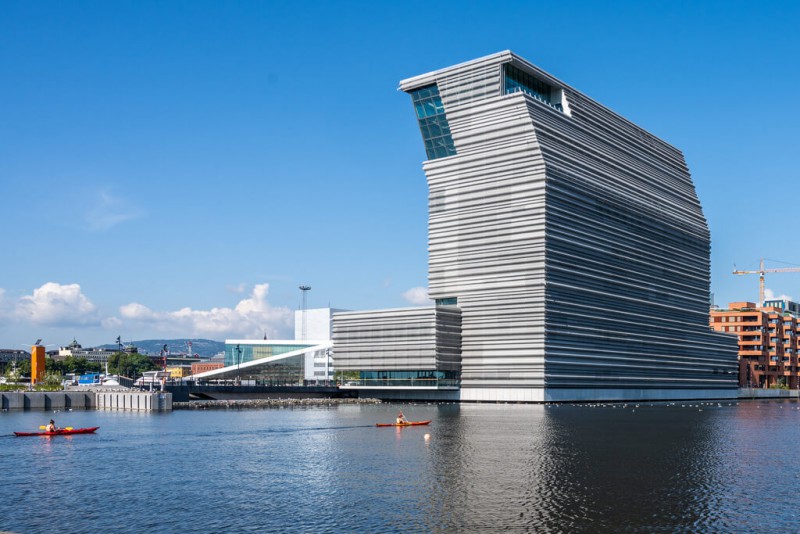
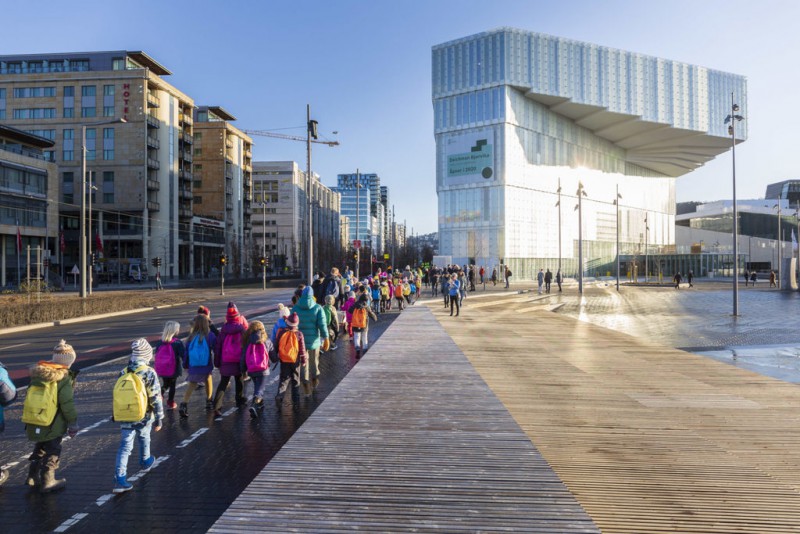
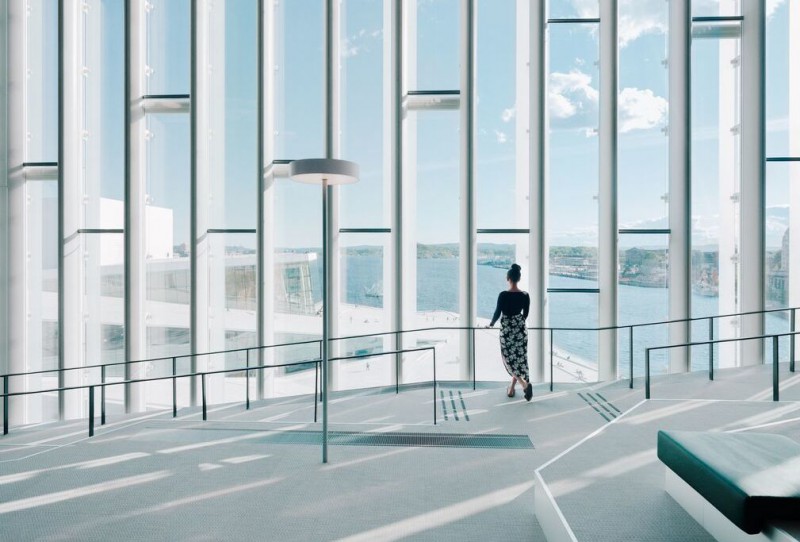
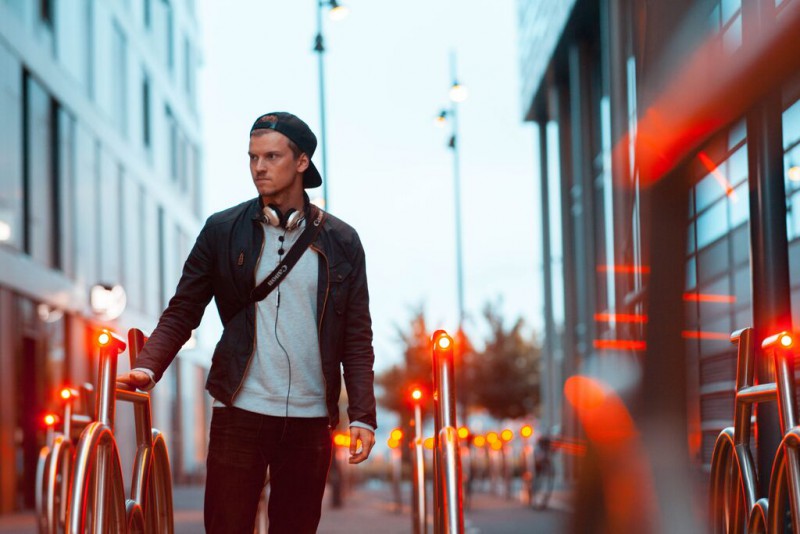
From history
Oslo has been inhabited since the 11th century. Some of the Viking expeditions that ravaged the European coasts in the Middle Ages departed from here. The city began to expand in the second half of the 18th century. In the 19th century, some of the city's landmarks such as the Storting (the parliament) and the National Theatre were built.
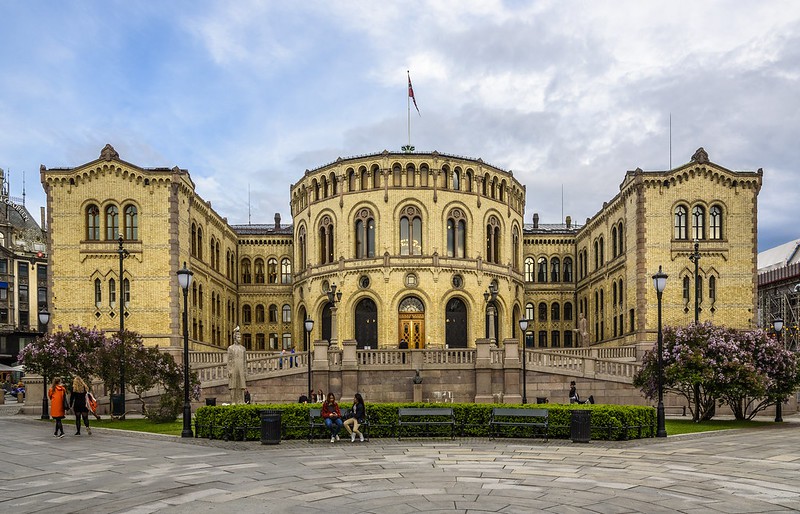
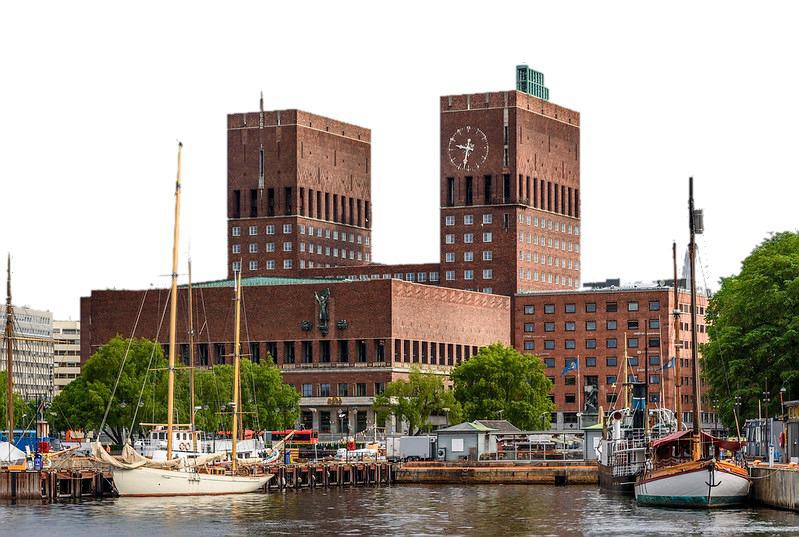
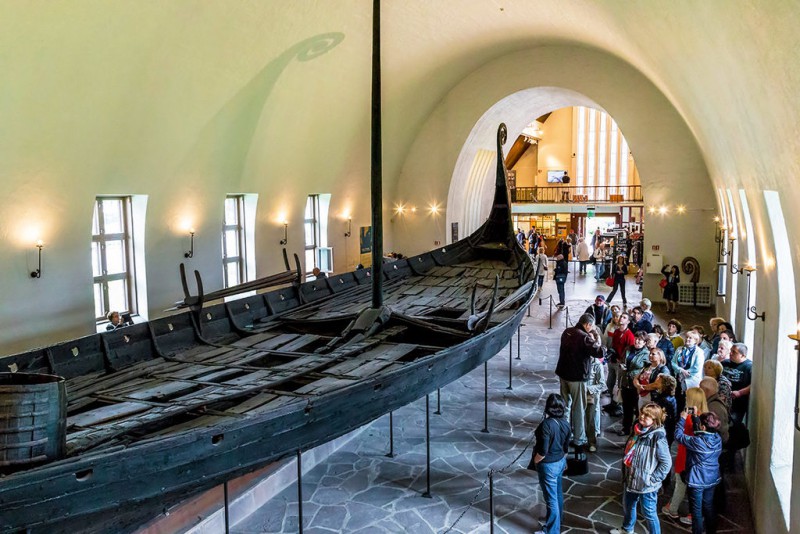
The Bygd√ły neighborhood, a peninsula in the western part of the city, is home to many museums. The highlights are the Norwegian People's Museum, the Kon-Tiki Museum and the Viking Ship Museum, a landmark in the city. On the other hand, along Karl Johans Street, in the city center, the most notable buildings and institutions of Oslo are located.
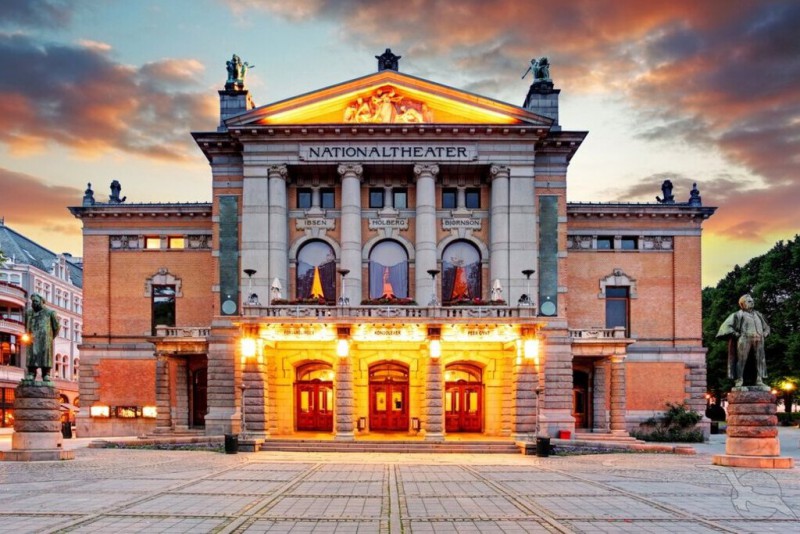
A green and sustainable city
In 2019 it was named Green Capital of Europe. The city of Oslo has made a great effort to reduce carbon dioxide emissions and promote the use of alternative energies. The city is the lowest of all European metropolises in terms of CO2 emissions. It has many parks and green spaces that purify the air.
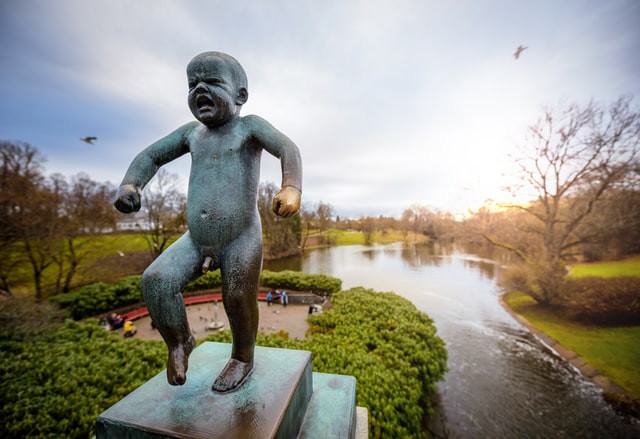
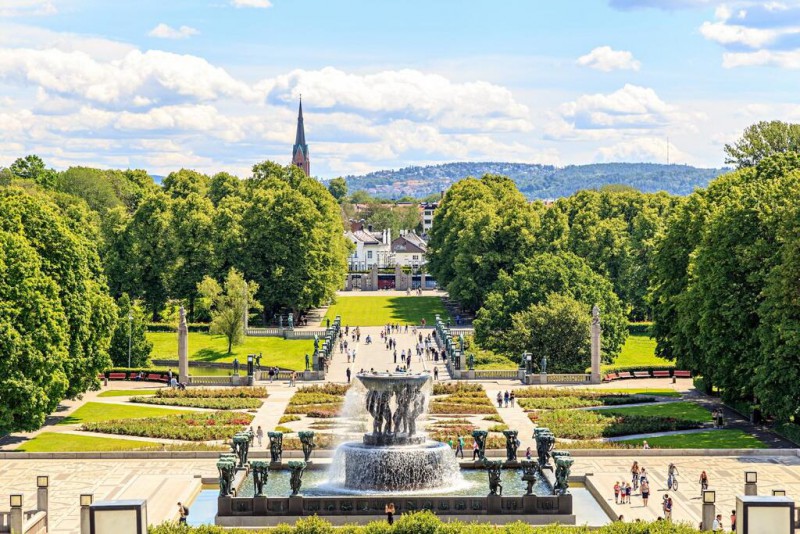
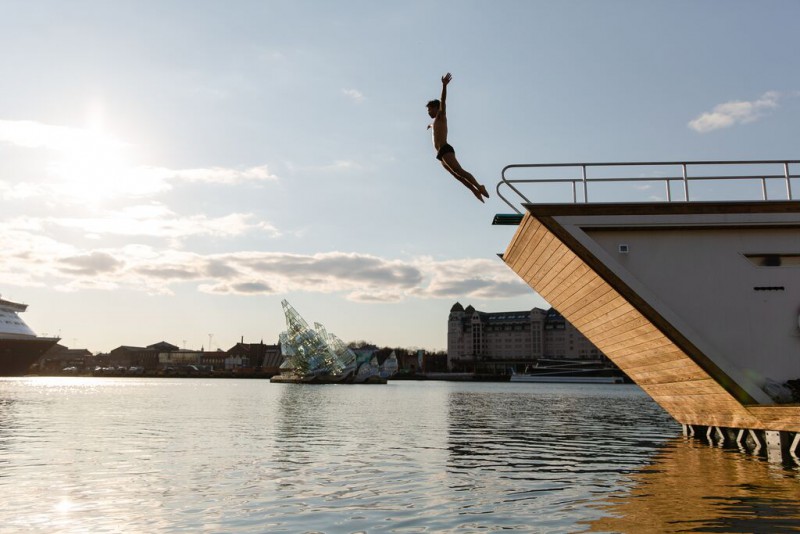
Oslo Fjord
The icy waters of the Oslo Fjord are a popular swimming area in summer. One of the locals' favourite activities is picnicking on the banks of the fjord and taking a dip if the weather is fine.
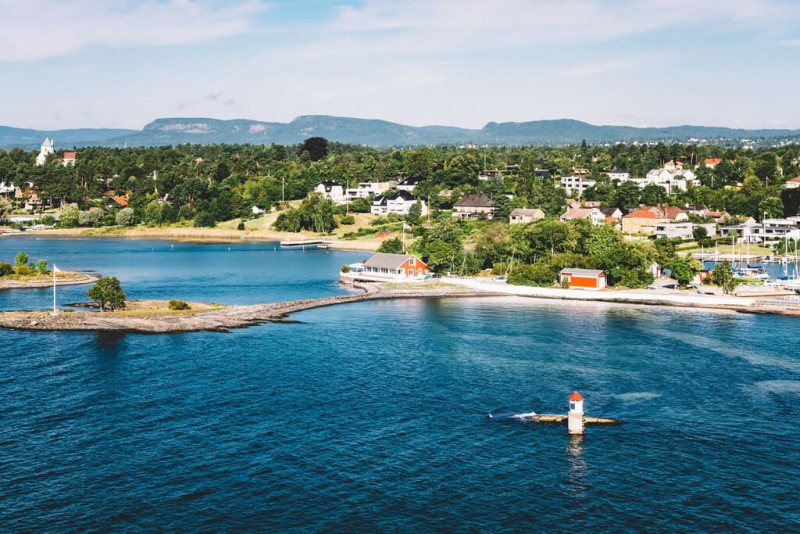
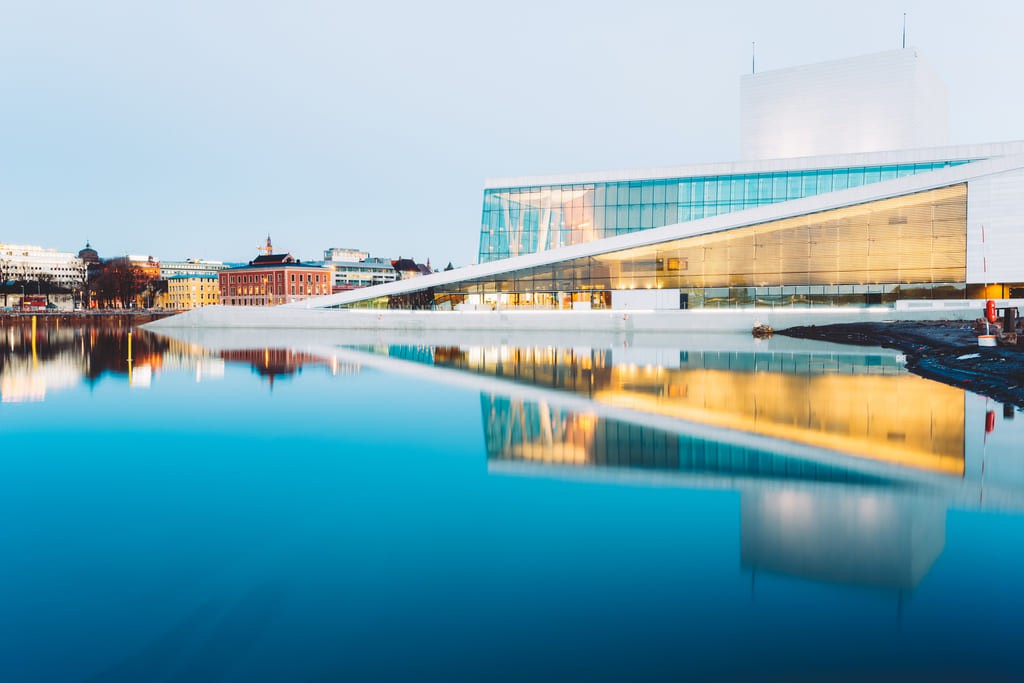
Oslo Opera House
Built in 2008 by the prestigious Norwegian architectural firm Sn√łhetta, the building houses the Norwegian National Opera and the Norwegian National Ballet. The building simulates an ice floe rising from the seabed. Its fa√ßade is clad entirely in white Carrara marble and clear glass that reflects the waters of the Oslo fjord where it is located. The main auditorium seats 1,360 people and has a stage that is 16 metres deep. The building has become the city's main icon.
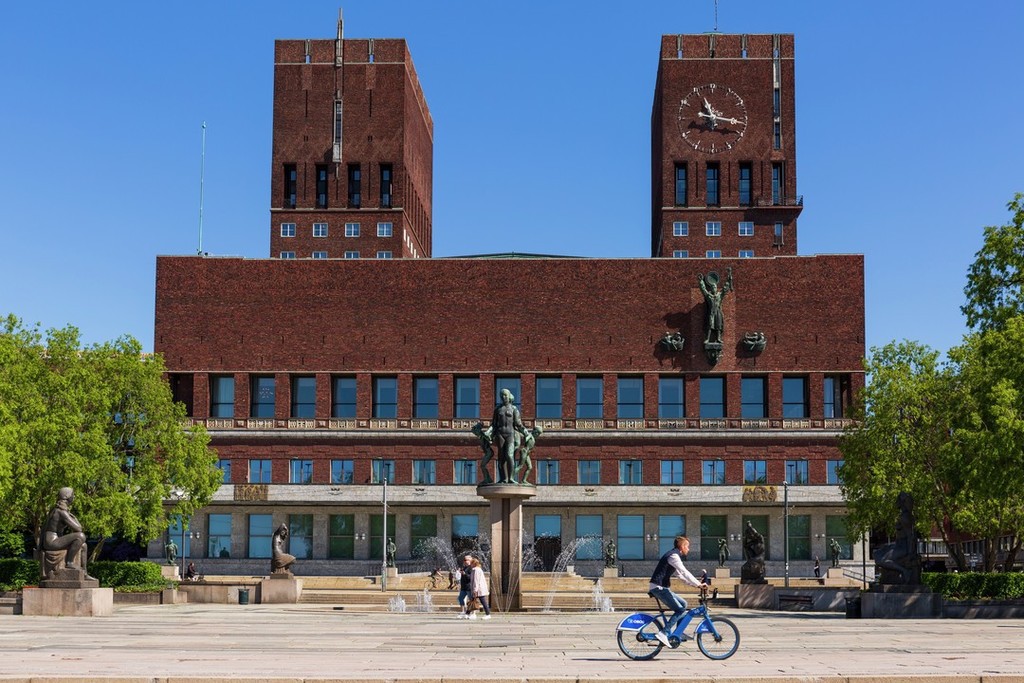
Oslo City Hall
It is located in the heart of the city, in the northern part of the Pipervika district facing the Oslo Fjord. It was officially opened in 1950, although its construction began in 1931. The building features two tall towers, 63 and 66 metres high. The north tower has an outstanding astronomical clock. The interior features frescoes by Norwegian painters Henrik S√łrensen and Alf Rolfsen. The works depict important scenes from the city's history, such as the German occupation, economic growth and the rise of the trade union movement. Since 1991, the Nobel Peace Prize has been awarded every 10 November (the day of Alfred Nobel's death). The ceremony is attended by the country's leading political figures and the entire Norwegian royal family.
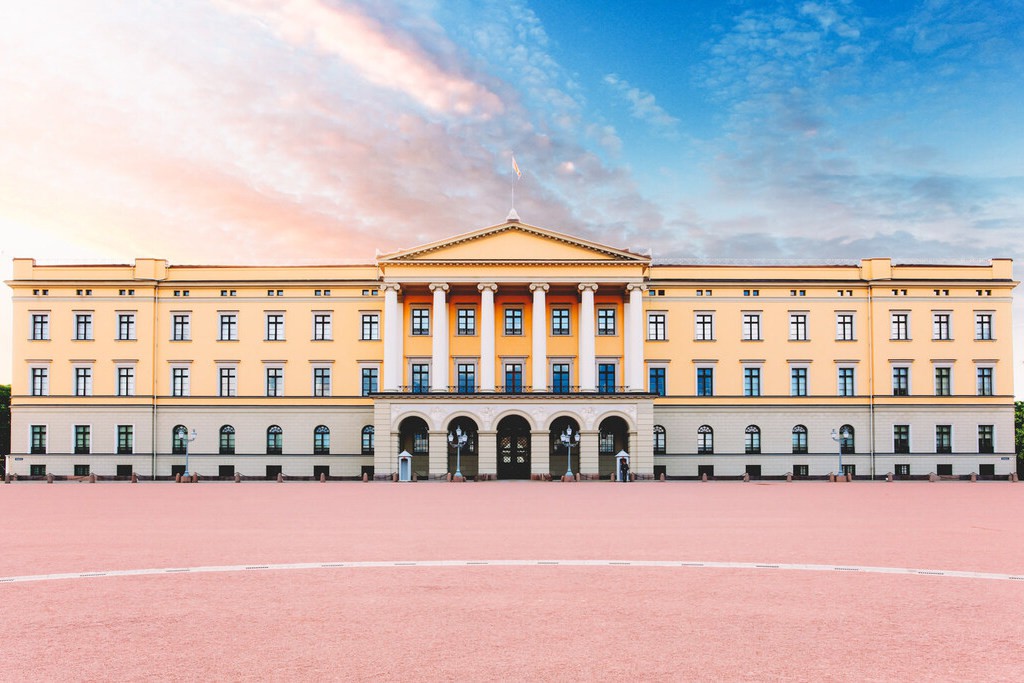
The Royal Palace
Built between 1823 and 1848, it is the official residence of the kings of Norway. The royal family use it as a place of work rather than as a residence. The Norwegian architect Hans Linstow designed a C-shaped building, surrounded by extensive gardens and a large square in front of the façade facing Karl Johans Street, Oslo's main thoroughfare. In the centre of the Royal Square is a sculpture of King Carl XIV John of Sweden. The three-storey Royal Palace in Oslo is built of plastered brick on a plinth of dressed stone. The prevailing architectural style is neoclassical.
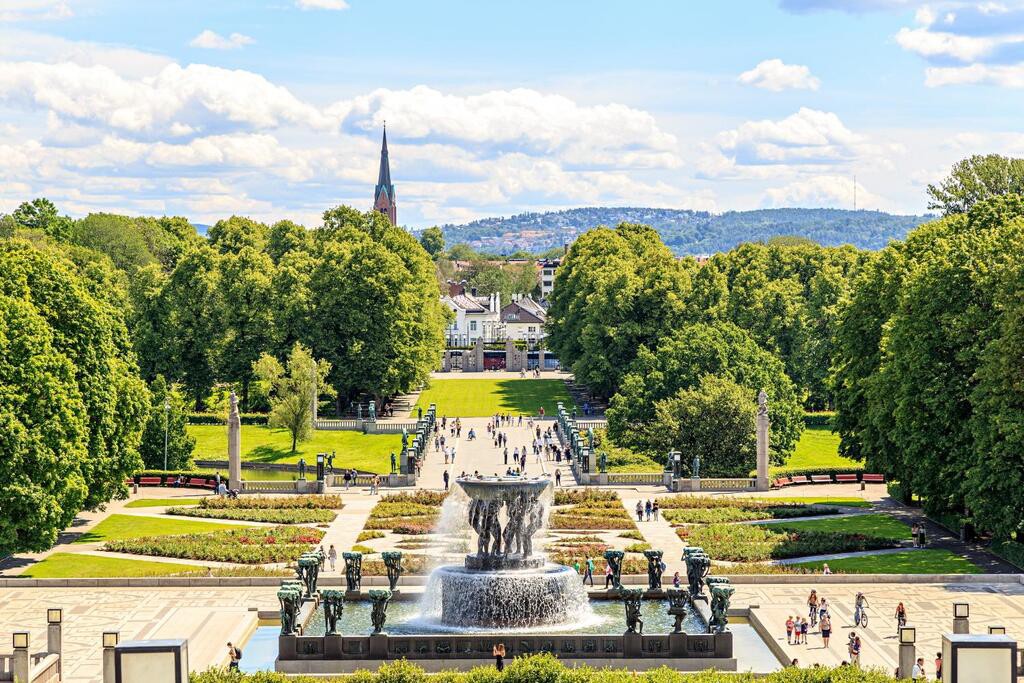
Vigeland Park
Vigeland Park is located inside Frogner Park, Norway's largest park with an area of 45 hectares. The park is Norway's most visited tourist attraction. Every year, almost two million people visit the park. The main attraction of the park are the 212 sculptures created by the Norwegian sculptor Gustav Vigeland between 1924 and 1943. At the centre of the park is "The Monolith", a 17-metre-high block of granite on which 121 nude, intertwined human figures are sculpted. Vigeland is an excellent place to rest and relax after visiting the city.
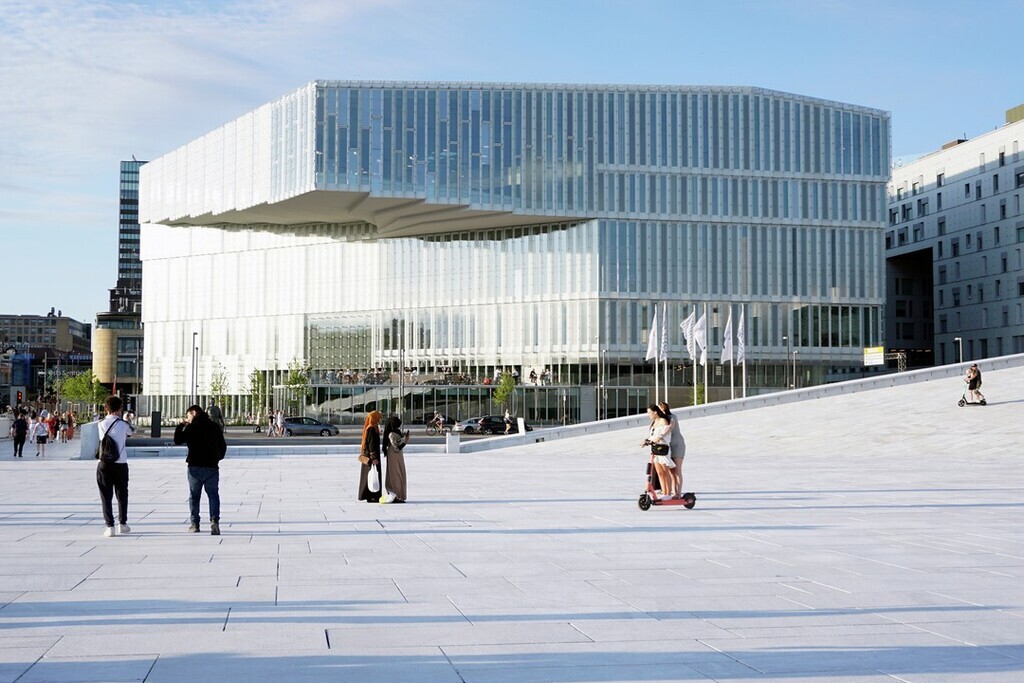
Oslo Library
Deichman Bj√łrvika is the Norwegian capital's new library, which opened in June 2020. It is located in Oslo harbour, just steps away from Oslo Central Station and the iconic Opera House. The building consists of 6 floors totalling 13,500 square metres of floor space. Inside the library is "Brainstorm" by local artist Lars √ė Ramberg. It is the largest neon artwork in Europe. It consists of 400 metres of handmade neon tubes in white and yellow glass. The library is an ideal place to relax after touring the city, enjoy a coffee or free Wi-Fi while reading one of the international magazines or newspapers available. From the roof terrace, you have a beautiful view of the Opera House and the Oslo Fjord.
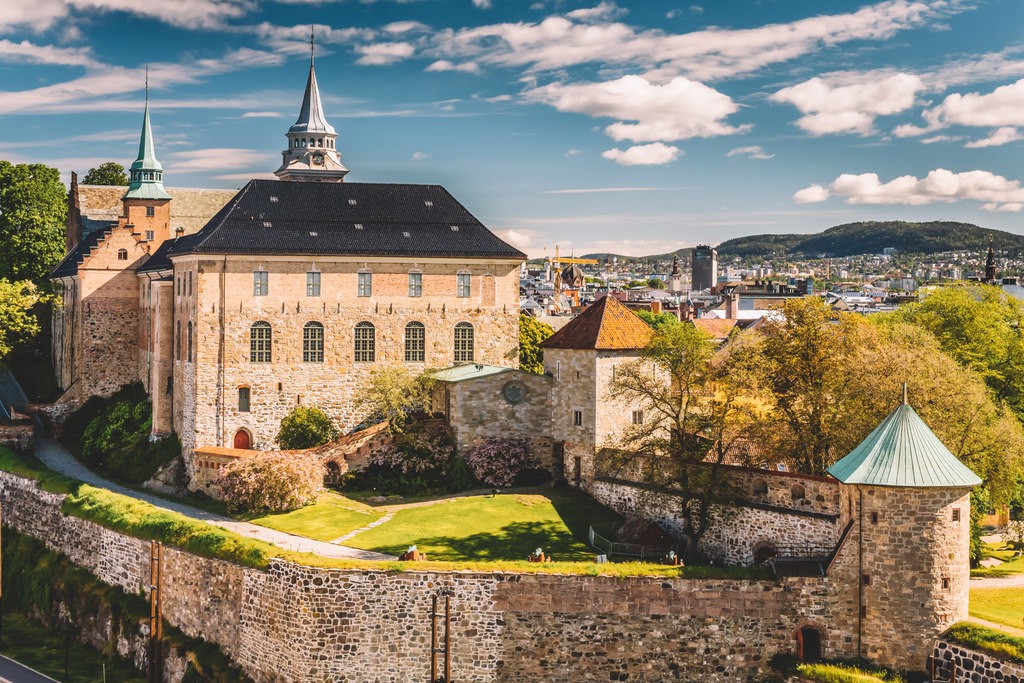
Akershus Fortress
Akershus Fortress is a complex of defensive buildings facing the Oslo Fjord. The original buildings were erected around 1260. Over the centuries, several modifications and extensions have altered the appearance of the complex. Today, the fortress houses the Norwegian Armed Forces Museum and the Museum of the Resistance. The complex also houses the royal mausoleum, the Prime Minister's office and the headquarters of the Norwegian Defence Staff.
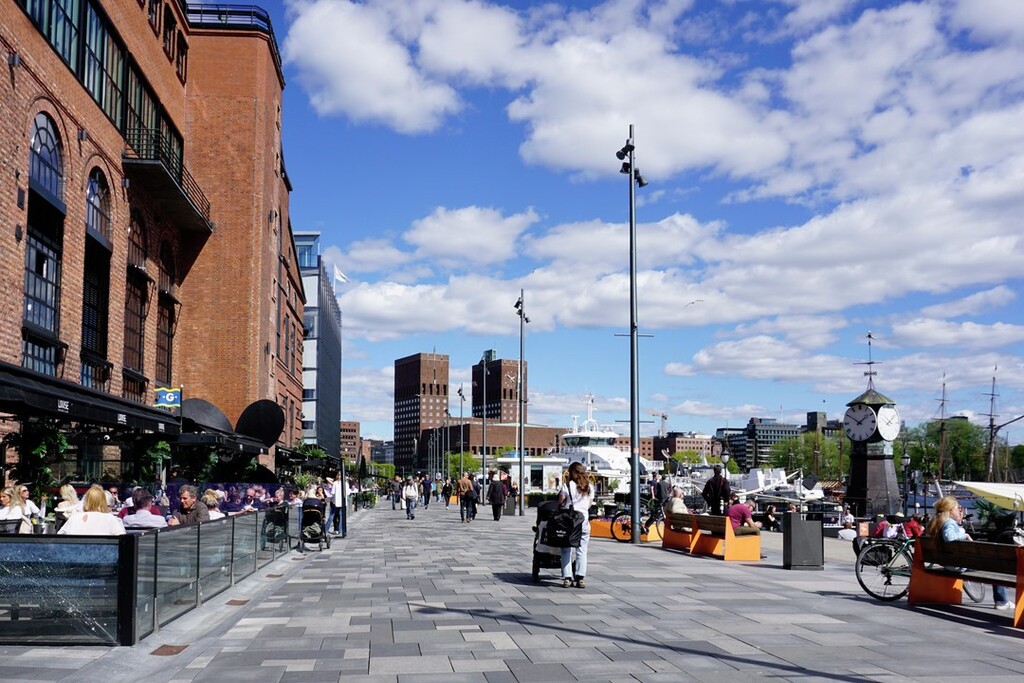
Aker Brygge
The harbour area facing the Oslo Fjord is known as Aker Brygge. It was an industrial and shipyard area until 1996 when it began its transformation into a commercial and recreational area. The neighbourhood was completed in 1998. The modernist and functional style of the buildings along the promenade stands out. An outstanding example of contemporary architectural style is the Tjuvholmen building and The Sneak Peak, a unique glass tower with a viewing platform at the top.
Aker brygge offers numerous shops, cafés and restaurants with magnificent views of the Oslo Fjord. If you want to have a good time in the Norwegian capital, Aker Brygge is a must-see.
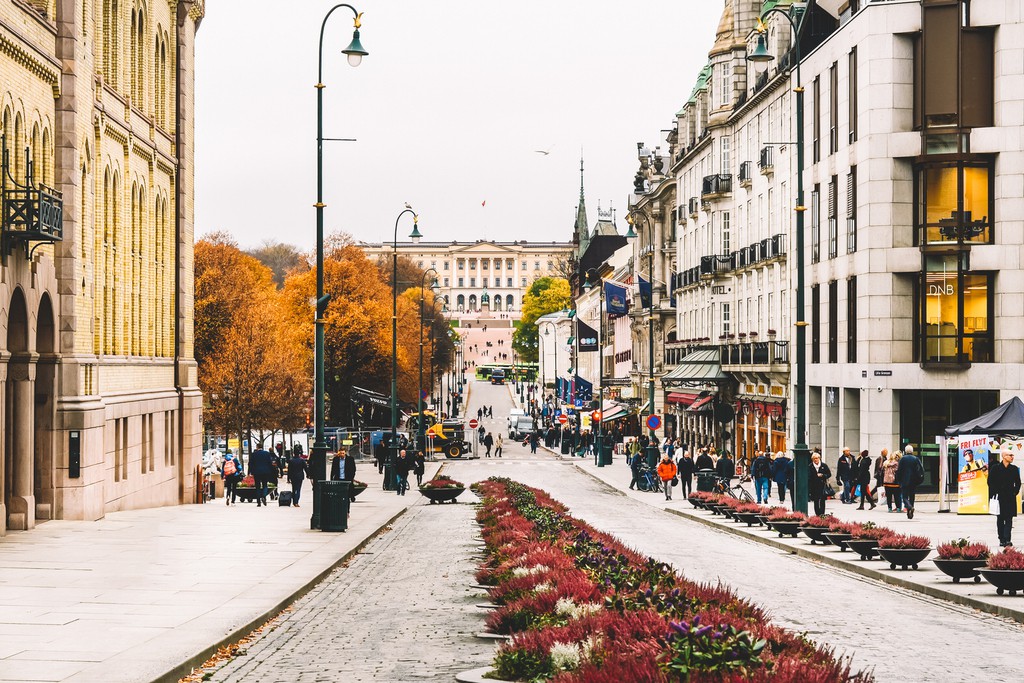
Karl Johans Street
Karl Johans is Oslo's main street. It starts at Jernbanetorget (right by the train station) and ends at the main square in front of the Royal Palace. The present route was laid out around 1860. The street is named after the monarch Charles XIV John of Sweden, who ruled Sweden and Norway in the first decades of the 19th century. The road is pedestrianised and has two distinct sides. While the right side is lined with shops, restaurants and cafés, the western side is lined with public buildings such as the Parliament (1866), the University (1841-1852) and the National Theatre (1899). The street is the scene of major events and celebrations in the city. On 17 May, citizens from all over the country walk down the street in a large festive parade that ends at the Royal Palace.
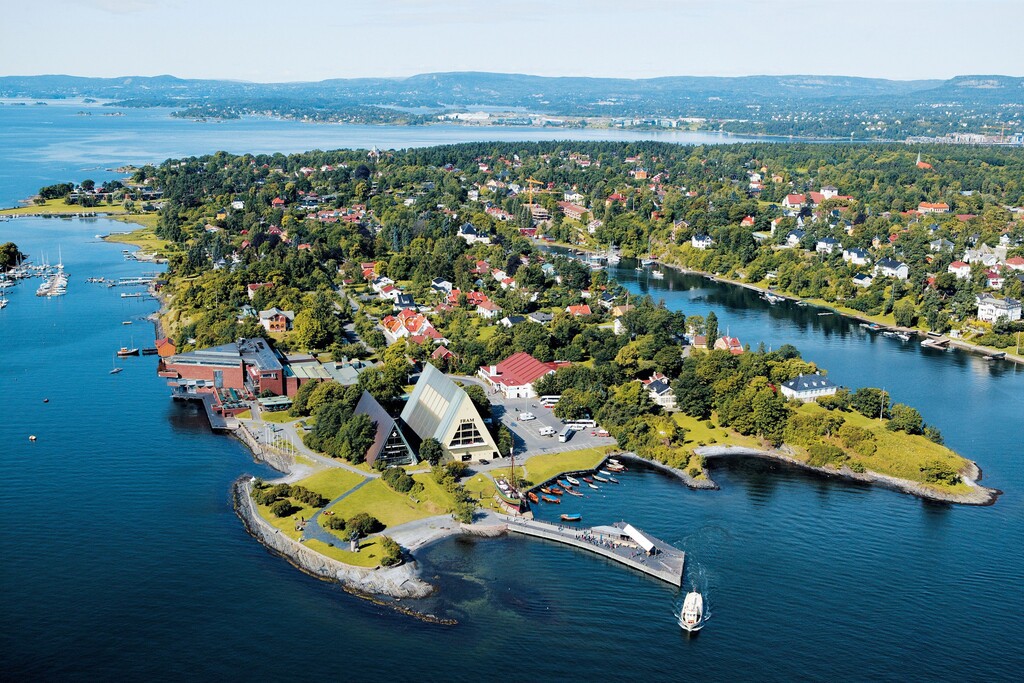
Bygd√ły: Oslo's museum peninsula
The Bygd√ły peninsula is located to the west of the city. Here you will find some of Oslo's most interesting museums. Highlights include the Viking Ship Museum, the Kon-Tiki Museum, the Norwegian Folk Museum and the Fram Museum among others.
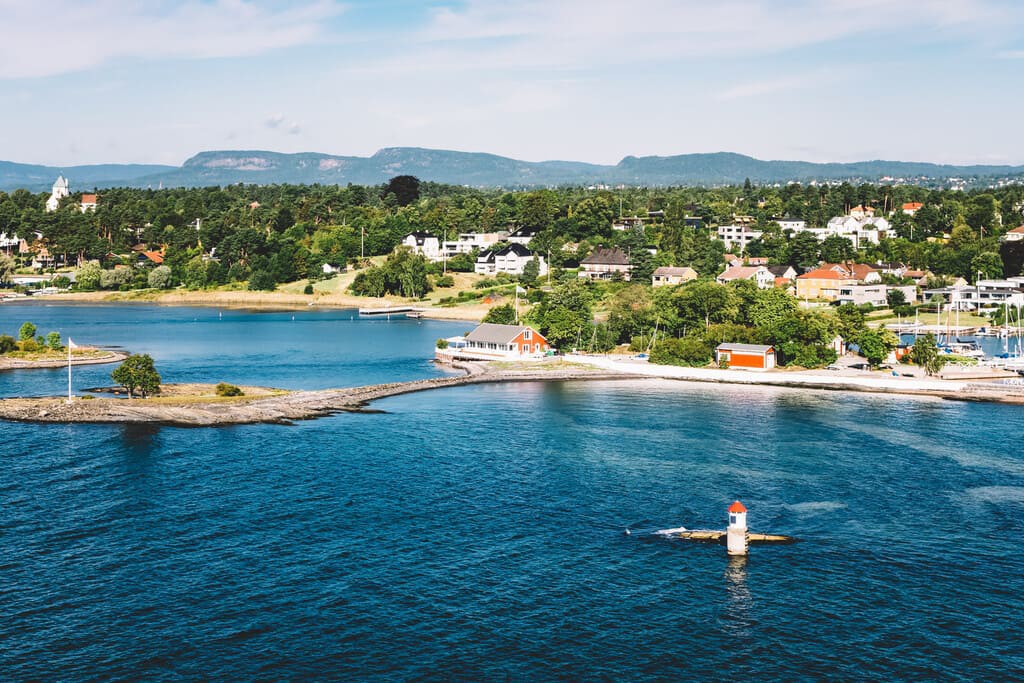
Oslofjord
The Oslo Fjord is a stretch of sea that runs from the Skagerrak Strait to the city of Oslo. It has a length of 100 km.
We organize your Norwegian trip!
Complete the form for us to provide you with a custom trip proposal
